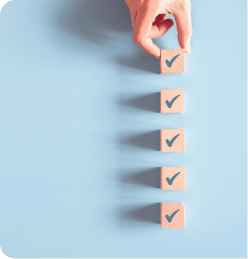Authored by Dr. Amber Hayden, DO
I get anxious — a lot.
But I’ve also got a secret weapon against anxiety, and it really helps. Since we all get anxious at times about something, you should know that my anti-anxiety trick is something everyone has with them at all times of the day, 24/7: it’s your breathing.

Your breathing is regulated by your autonomic nervous system so you don’t have to think about it to stay alive. But you can change your breath with breathwork! Learning how to take full, deep breaths from your abdomen can slow your heartbeat and stabilize your blood pressure, helping you feel calmer in just a few seconds. Breathing like this sends a “relaxation message” to your adrenal system to help prevent your fight-or-flight response from kicking in.
How your breath flips the switch
I’m amazed how many people know about the benefits of deep breathing without being able to actually do it. Maybe you’re one of them!
We live in a shallow-breathing society. We pull in our stomachs to look thinner. We hold our breath when we’re nervous, concentrating or exercising hard. And we breathe through our mouths too much. Mouth-breathing messes with the oxygen your body gets through inhaling.
Breathing through your mouth also doesn’t use your full lung capacity, which is a key element for activating that natural relaxation response. (You do have one, I promise.)
7 little steps to learn deep belly breathing
You can learn to do deep belly breathing in a way that will become more and more natural as you practice. And the fact is, you will have to practice if you ever hope to make deep breathing an easy habit.
So if you can do it for five breaths, then you can do it for five minutes. Here’s how to get started with breathwork:
- Set aside 5-10 minutes in a quiet, comfortable spot.
- Sit up straight (but not rigid) or lie down if you prefer. Put one hand on your belly and breathe normally for about a minute.
- Now take in one long, slow, deep breath through your nose, feeling your stomach rise with the inhale — and then exhale through your nose, letting your belly fall as your lungs empty out.
- Then repeat and count the seconds as you inhale for 4 seconds, pause for a split second at the top of your breath and exhale, counting for 4 seconds.
- Now set a timer for 30 seconds and do it all again. The first time you do it, you might be surprised at how hard this kind of breathing can be and especially by how easy it is to be distracted.
- Your mind will drift and you’ll forget what you’re doing. Then you’ll be back to your regular breathing. Be patient and nice to yourself, and simply start over as many times as you need to.
- Gradually increase the length on your timer. After a few sessions, go for 2 minutes, then 3 minutes, then 4 minutes, etc. If 4 minutes seems like forever, go back to step 3.
Here’s another deep breathing technique…
Lots of people concentrate better on their breathing with their eyes closed, but I like to keep mine open. I focus on one tiny thing, like a spot on the floor a few feet in front of me because I find it helps direct my attention to the breathing itself. I keep my eyes on that spot and every time my mind wanders, I just come back to focusing on my breath.
It’s absolutely essential that you breathe in and out almost exclusively through your nose. You certainly can start your practice session with a few “cleansing” breaths, inhaling through your nose and exhaling out your mouth. After that, seal your lips and use your nostrils exclusively.
For many people, this kind of breathing is as hard as learning a new language. You may feel incredibly self-conscious at first but keep going — I promise the payoff is that good. So take a few deep breaths and get back to your life! You can read more about deep breathing with our article Take time to breathe for your health.
- https://www.health.harvard.edu/mind-and-mood/relaxation-techniques-breath-control-helps-quell-errant-stress-response









